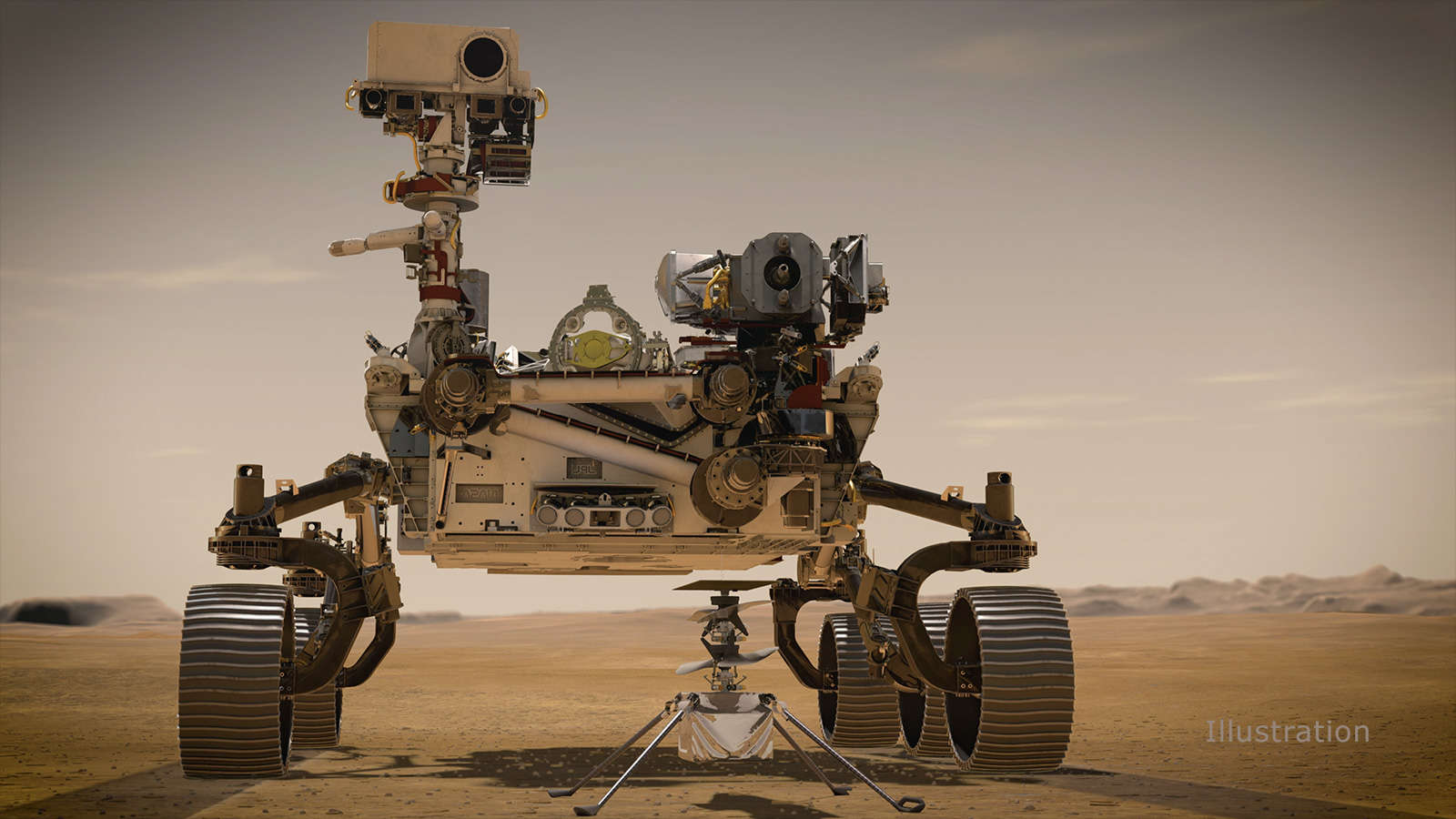Create a free profile to get unlimited access to exclusive videos, sweepstakes, and more!
Out-of-this-world video: Mars helicopter Ingenuity takes a record-breaking 25th flight
Ride along with an interplanetary drone copter.

While the Earth turns and human events spin on, things are afoot — or ablade — on Mars as well.
The Mars helicopter Ingenuity, taken to the Red Planet as part of the rover Perseverance mission, recently performed its 25th flight over the Martian surface, breaking several of its own records as it did.
The flight, which took place on April 8, 2022, was the longest so far, taking it 704 meters from its start — nearly half a mile. It hit a speed of 5.5 meters per second as well, the fastest it’s moved. That’s a pretty brisk pace, faster than most people run.
And, of course, every flight Ingenuity takes is a record-breaker. As the first and only self-powered flying machine on the planet, tautologically each journey is one more than the last.
Ingenuity has a navigational camera that points straight down during flight, and took images rapidly enough to make this extremely cool video:
The video starts just after liftoff — the shadow of the helicopter looms large on the surface, then rapidly shrinks as Ingenuity reaches its altitude of 10 meters. It flies over quite a few sand ripples, like mini-dunes, blown by the thin Martian air. The surface then changes to rock fields, and finally becomes rather flat and boring before it lands again.
Well, boring for an airborne view from a semi-autonomous drone flying over the surface of another planet.
Ingenuity was designed as a testbed for engineering to see if flying on Mars was possible at all, and to see what works well and what might not. The helicopter is an amazing machine: The blades are over a meter long tip to tip, and spin at 2,500 RPM to provide enough lift in the whisper-thin Martian air, just 0.6% as thick as Earth air at sea level. The 1/3rd gravity makes it easier, though, as well as the astonishingly low mass of the entire kit, just 1.8 kilograms: about 1.5 pounds in Martian gravity.
It also has an important function for the overall mission, flying ahead of Perseverance to scout out interesting things to see and study, and look for potential hazards.
This flight was just shy of the first anniversary of its first flight, taken on April 19, 2021. It’s currently prepping for its 29th such flight. Its original mission was to perform a mere five flights, but it has exceeded that hugely, which has become a trademark of missions designed and built at JPL.
Still… in early May, with Martian winter approaching, there was a scary moment when Earth lost contact with Ingenuity. It took a while but communication was reestablished, and it turns out the lithium ion battery on board lost charge, which reset the mission clock and caused some software issues. Ingenuity has solar panels on it to recharge the battery after each flight, but the Sun is getting lower, the days shorter, and temperatures lower at its location, and it’s at the point where it cannot recharge enough to support the usual flights it’s been taking.
Worse, the extremely low temperatures at night, reaching -80° C (-110° F), are enough to potentially damage the electronics. There’s a heater onboard but without power it cannot keep things warm. This could present a shortened lifetime for the ‘copter. It’s entirely possible it will survive the Earth-year-long Martian winter, but it also may not.
Either way, this mission has been staggeringly successful. It flew far more than planned, farther, and faster as well. It’s easy to forget that getting landers on Mars was at best a 50/50 shot in the early days, but these days NASA and JPL make it look easy.
It’s not. Mars is hell, and hell on machines. Dust, cruelly cold temperatures, radiation and more make it an unforgiving planet to study in situ. The amazing successes we’ve seen are due to huge teams of scientists and engineers giving their all to explore.
These machines are among the most human things we do. They go boldly, and we reap the wonder and awe.



























